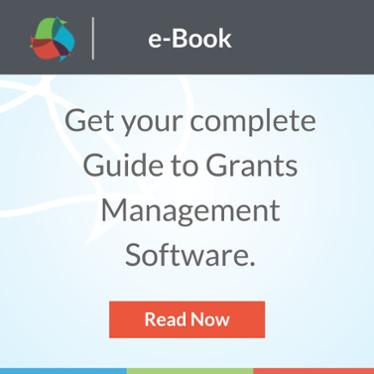
Grants management software is an investment, no doubt about it. But like all good investments, you should expect positive returns.
And we’re here to tell you: Adopting grants management software is one of the smartest investments you’ll make for your foundation.
Why? Because grants management software:
- Increases the quality and efficiency of your work;
- Eliminates human error;
- Increases foundation transparency;
- Alleviates the burden on your grantees; and
- Saves you valuable time.
The bottom line: The benefits of adopting the right grants management software far outweigh the cost. But measuring the impact or benefit of grants management systems can be difficult – it’s hard to ascribe value to intangibles, like efficiency, or grantee burden.
To help us with this we turned to Karen Graham, Executive Director of Idealware, who wrote a great article on the ROI of tech for NTEN, in which she states: “When an organization is using technology effectively, the results are greater than or equal to the resources invested. That’s what it means to have a positive Return on Investment (ROI).”
In order to calculate the value of grants management software, draw up a Return on Investment (ROI) analysis. Essentially, this kind of ROI analysis is a great way to view qualitative benefits through a more quantitative lens. The basic formula will be familiar to you:
ROI = net gain/cost
But the process is a little different. First, you need to come up with two lists – one of benefits, or gains, and another list of costs – and assign each a number. It’s OK to make guesses and approximations at this point. “Just make note of your assumptions as you go along,” Graham says, “and consider running some alternate scenarios.”
The forthcoming 2016 Consumer’s Guide to Grants Management Systems report, sponsored by the Technology Affinity Group and Idealware, will be a great place to learn about the varying benefits that grants management software vendors provide.
Your ROI analysis should help you compare the benefits of new grants management software with the upfront costs. For example: If your staff spend fewer hours tracking progress on grants, and are able to devote more time to other projects, how much money will you save? How many hours will your staff members be able to devote to your foundation’s mission, including spending time with grantees, and checking in with beneficiaries?
With a new grants management system, your grantees are likely to spend less time on their online applications. How might this affect your relationship with them? How will your foundation’s attitude towards and relationship to transparency change after implementing grants management software? How much money will you save when your grants management system is cloud-based?
After adding up all the benefits, you should be able to make the call. It’s not an exact science, but it will help guide your decision making process down the right path for you and your organization.
Does it make sense for you to invest in grantmaking software? Ultimately, we think it does. We believe that grants management software is an investment that helps your foundation not only accomplish day-to-day operations more efficiently, but also helps your entire organization step back rethink the way it goes about doing its work. This type of technology helps you focus much more on your mission and ultimately make a greater overall impact in the world.
